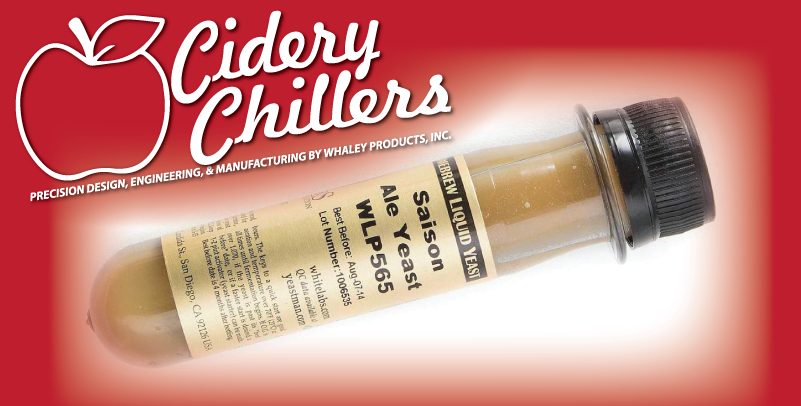Yeast is the microbe that converts sugar into alcohol. The yeast is kept dry in a dormant state until it is needed. Once the yeast is added to a wet environment it activates and starts feeding on the sugars present. The yeast strains used in hard cider production are similar to beer, wine, and champagne strains. In fact they can be used interchangeably. However, there are some particular strains that are popular with cider makers.
WLP611 New Nordic Yeast Blend
Originated on an island off the coast of Denmark. It is a mix of three strains 2 from Saccharomyces Cerevisiae and one from Torulaspora Delbrueckii.
WLP603 Torulaspora Delbruekii
Originated from fruit trees in Denmark. Traditionally used to ferment cider and wine, but can be used for beer as well.
WLP 616 Funky Cider Blend
Made from a blend of yeast and bacteria. The yeast being two different strains of Saccharomyces, and the bacteria being Brettanomyces and Lactobacillus. The taste this creates in the cider is slightly tart, with a mild funk aroma.
WLP773 Scottish Cider Blend
Made from a blend of two ale strains and a wine strain. These are made with Saccharomyces strains and leave a residual sweetness to the cider. This yeast is used to make dry sparkling or still ciders.
WLP775 English Cider Yeast
This is the most popular cider yeast. Creates a classic dry cider while retaining apple flavors characteristics. This yeast will create Sulphur while fermenting, but it disappears within the first two weeks of aging.
 Additives are often added to cider prior to fermentation in order to add different flavor profiles, speed the fermentation process, and increase the alcohol content in the final product. Below are a few popular additives used by cider producers.
Additives are often added to cider prior to fermentation in order to add different flavor profiles, speed the fermentation process, and increase the alcohol content in the final product. Below are a few popular additives used by cider producers.
Fermaid K
This is a complex blend of yeast nutrients that supplies ammonia salts (DAP), alpha amino nitrogen, sterols, unsaturated fatty acids, magnesium sulfate, thiamin, folic acid, niacin, biotin, calcium pantothenate, and inactive yeast.
Fermaid O
This is an organic yeast nutrient. It is a blend of inactivated yeast fractions rich with organic nitrogen. Does not contain added ammonia salts (DAP). Produces lower levels of negative sulfur compounds compared with added DAP. Helps maintain steady fermentations and limits temperature spikes.

